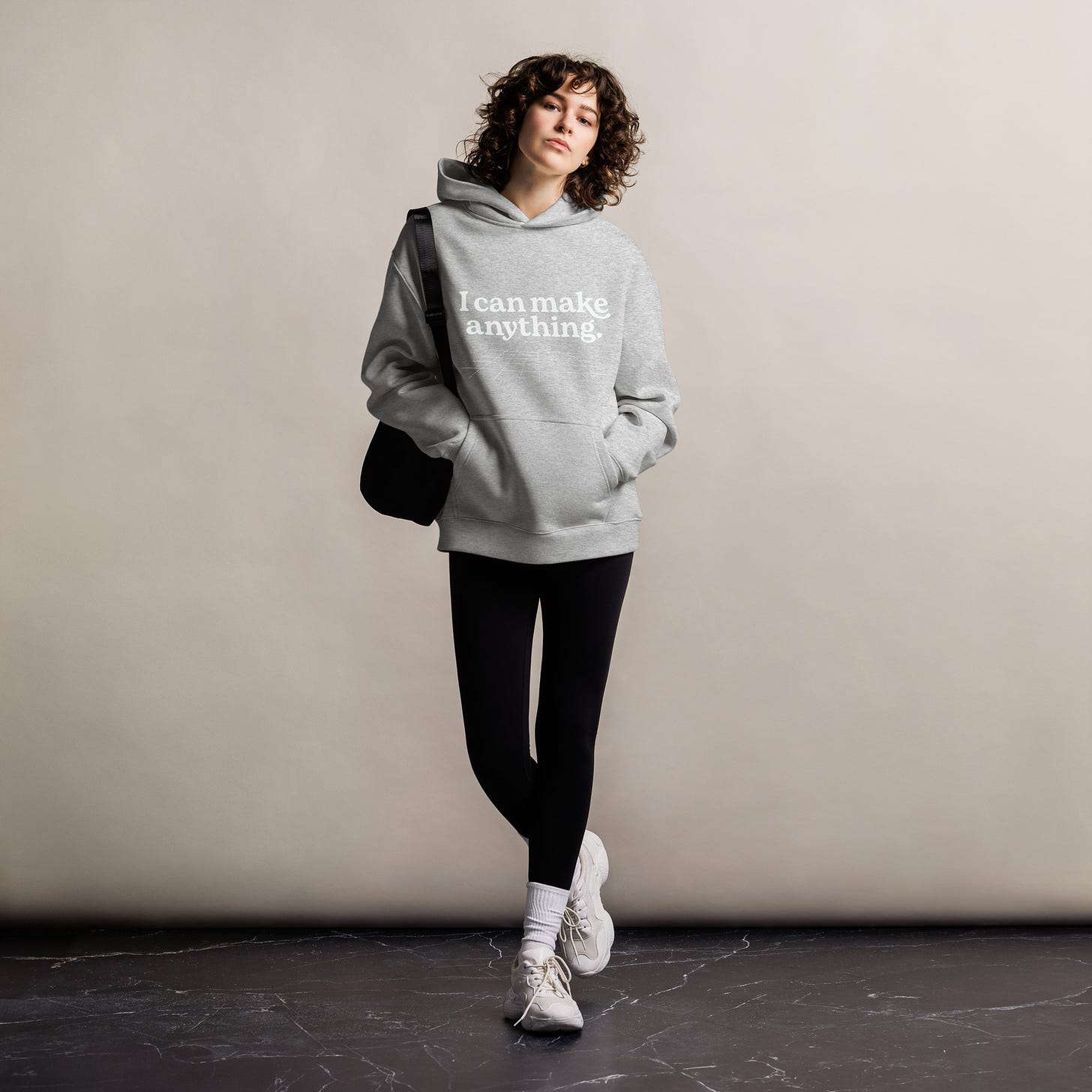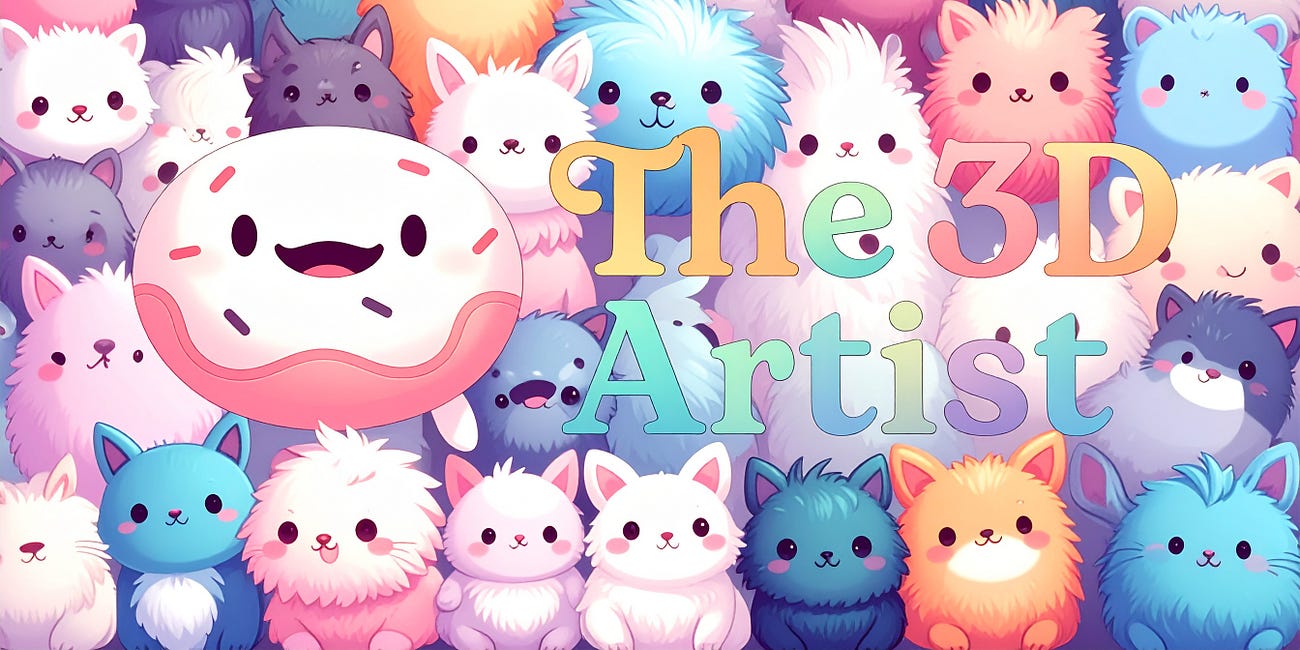Welcome back to WTF is 3D!!! The series that breaks down complicated 3D and AI tools in a way that anyone can understand.
I was planning to take a short break from the WTF series, but something too good came up that I had to write one more.
This week's question comes from a reader who asked:
"I keep hearing people talk about ComfyUI, and I keep pretending like I know what it is, but I have no clue. Does it have something to do with AI and Blender or something? Can you please help me out?"
It’s a great question.
So in this article, we're diving into what ComfyUI actually is: a node-based interface that connects different AI applications together into one customizable workflow.
What is ComfyUI?
ComfyUI is an open-source tool that gives you a node-based system for visually crafting creative workflows, including AI tools.
Each node represents a specific function:
Load an AI model
Enter a text prompt
Set the image size and settings
Choose how the AI generates the image
Save or process the output
Instead of coding, you visually connect the nodes to create custom, flexible pipelines.
In its base form, ComfyUI acts as a "connector" between AI models like Stable Diffusion, ControlNet, LoRA adapters, samplers, image processors, and more, all using a visual interface.
You build exactly the workflow you want, see every step, and can tweak everything at any point.
Examples of Workflows
Here are a few real-world things people have built using ComfyUI:
Text-to-Image Generation Pipelines
Example: Creating AI Art with ComfyUI — chaining prompts, samplers, and upscalers into a polished pipeline.
AnimateDiff Setups
Example: AnimateDiff in ComfyUI Tutorial — building animated frame sequences with motion controls.
Style Mixing and Model Blending
Example: Mixing Models and Styles — combining different checkpoints like realism and anime.
Batch Image Generation
Example: Automating Batch Outputs — generating hundreds of variations automatically.
Inpainting Workflows
Example: Inpainting with ComfyUI — editing specific parts of an image using masking and AI regeneration.
Why artists love it
Artists love ComfyUI because it gives them complete control over the creative process. Instead of relying on a black box where the AI makes mysterious choices, they define exactly how the AI should process each request. Every step in the workflow is transparent and adjustable, allowing for precise tuning, experimentation, and troubleshooting. This clarity and control enable the ability to push creative boundaries and iterate quickly on ideas.
Workflows can also be saved and shared easily as .json files, making it simple to reuse complex setups or collaborate with others. It's easy to trade workflows across the community or build a personal library of techniques to revisit at any time. This encourages artists to experiment without the fear of losing their best setups.
One of the biggest reasons artists are drawn to ComfyUI is that it allows them to create incredibly complex AI workflows without needing to write any Python scripts or technical code. Everything is done visually. Whether you want to blend multiple models, run conditional branches, or layer different AI techniques together, you can do it all through a no-code interface. This makes high-level AI experimentation accessible to artists, designers, and creators who aren't programmers.
ComfyUI empowers users to feel like engineers of their creative processes, giving them the ability to fine-tune, expand, and truly customize how AI contributes to their work.
How to try it out
If you're curious to explore ComfyUI yourself:
Install it
docs.comfy.org/get_started/first_generation
Watch tutorials
YouTube: Learn ComfyUI Step-by-Step
Join the community
Reddit: r/ComfyUI
Download shared workflows
Find example workflows and templates on CivitAI.
Final Thought
ComfyUI isn't just another AI tool — it's a true creative playground for anyone ready to take control of how their ideas come to life. By removing the need for coding and making the process visual and modular, it opens the door for artists and creators to design workflows as unique as their imaginations. Whether you're a seasoned professional or just starting out, diving into ComfyUI gives you the power to move beyond presets and push AI to work for you, not the other way around. If you're looking to expand your creative toolkit and actually understand how these systems fit together, there's no better place to start.
Stay curious, stay comfy, and always come to my if you find yourself asking WTF is this!!?!??!
The 3D Artist Community Updates
We got Winbush for an AMA!!!
Jonathan Winbush is a trailblazing 3D artist and motion graphics designer with over 15 years of experience pushing the boundaries of visual storytelling.
One of the earliest adopters of real-time workflows in motion design, Winbush has worked with top brands like Marvel, Warner Bros., The Discovery Channel, and Hasbro, creating stunning 3D visuals and dynamic animations.
Named one of the "Top 25 Artists in the World" by Motionographer, Winbush is a certified Unreal Authorized Instructor, a leading educator, and a major creative force in the 3D community. His work spans television, feature films, theme parks, and virtual reality experiences, and his tutorials empower artists worldwide to master cutting-edge tools like Cinema 4D, Unreal Engine, and virtual production.
Don't miss the chance to learn from one of the industry’s most inspiring innovators!
3D Merch is here and we have a new hoodie!
3D News of the Week
Spline Introduces Hana - Spline.Design
Custom Dither Photoshop Filter Made In Substance 3D Designer - 80.lv
The Art of Animation Auction - Sothebys
Adobe releases ‘created without generative AI’ tag to label human-generated art - Fast Company
South Korean Government To Invest $1 Billion Into Animation Industry - Cartoon Brew
3D Tutorial
3D Job Spreadsheet
Link to Google Doc With A TON of Jobs in Animation (not operated by me)
Hello! Michael Tanzillo here. I am the Head of Technical Artists with the Substance 3D Growth team at Adobe. Previously, I was a Senior Artist on animated films at Blue Sky Studios/Disney with credits including three Ice Age movies, two Rios, Peanuts, Ferdinand, Spies in Disguise, and Epic.
In addition to his work as an artist, I am the Co-Author of the book Lighting for Animation: The Visual Art of Storytelling and the Co-Founder of The Academy of Animated Art, an online school that has helped hundreds of artists around the world begin careers in Animation, Visual Effects, and Digital Imaging. I also created The 3D Artist Community on Skool and this newsletter.
www.michaeltanzillo.com
Free 3D Tutorials on the Michael Tanzillo YouTube Channel
Thanks for reading The 3D Artist! Subscribe for free to receive new posts and support my work. All views and opinions are my own!












Wow!